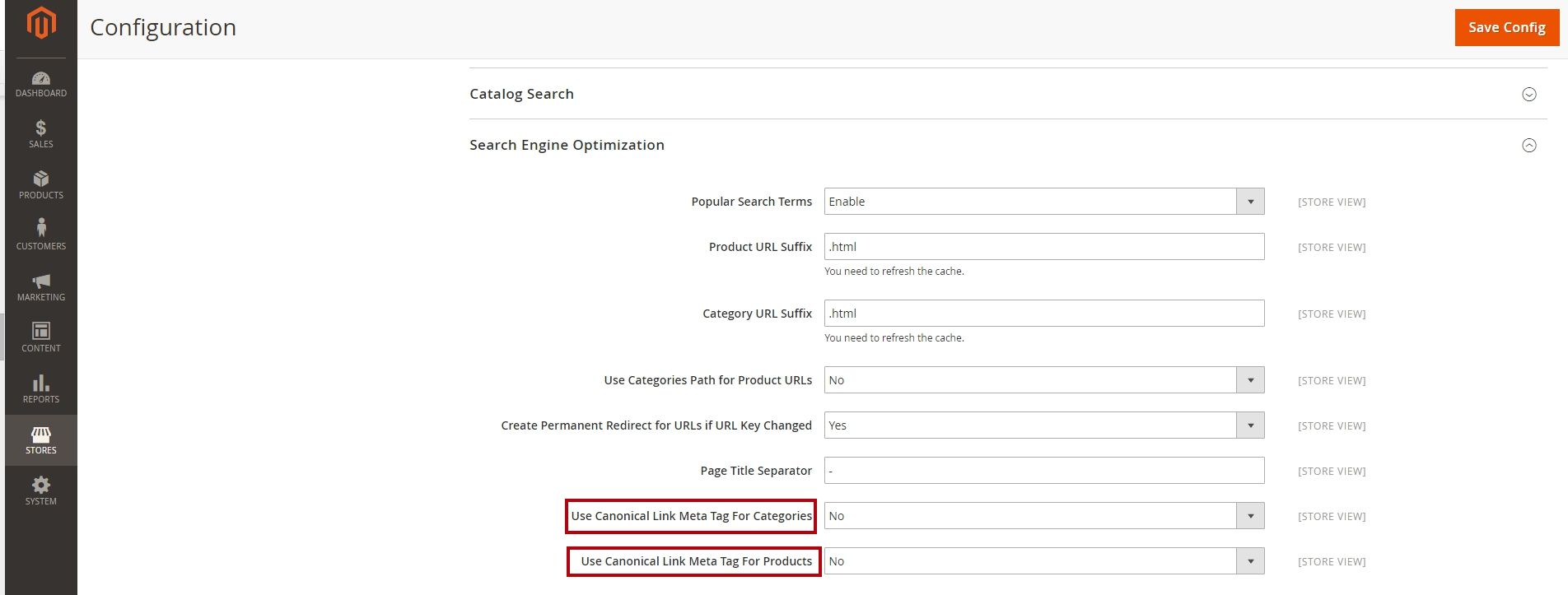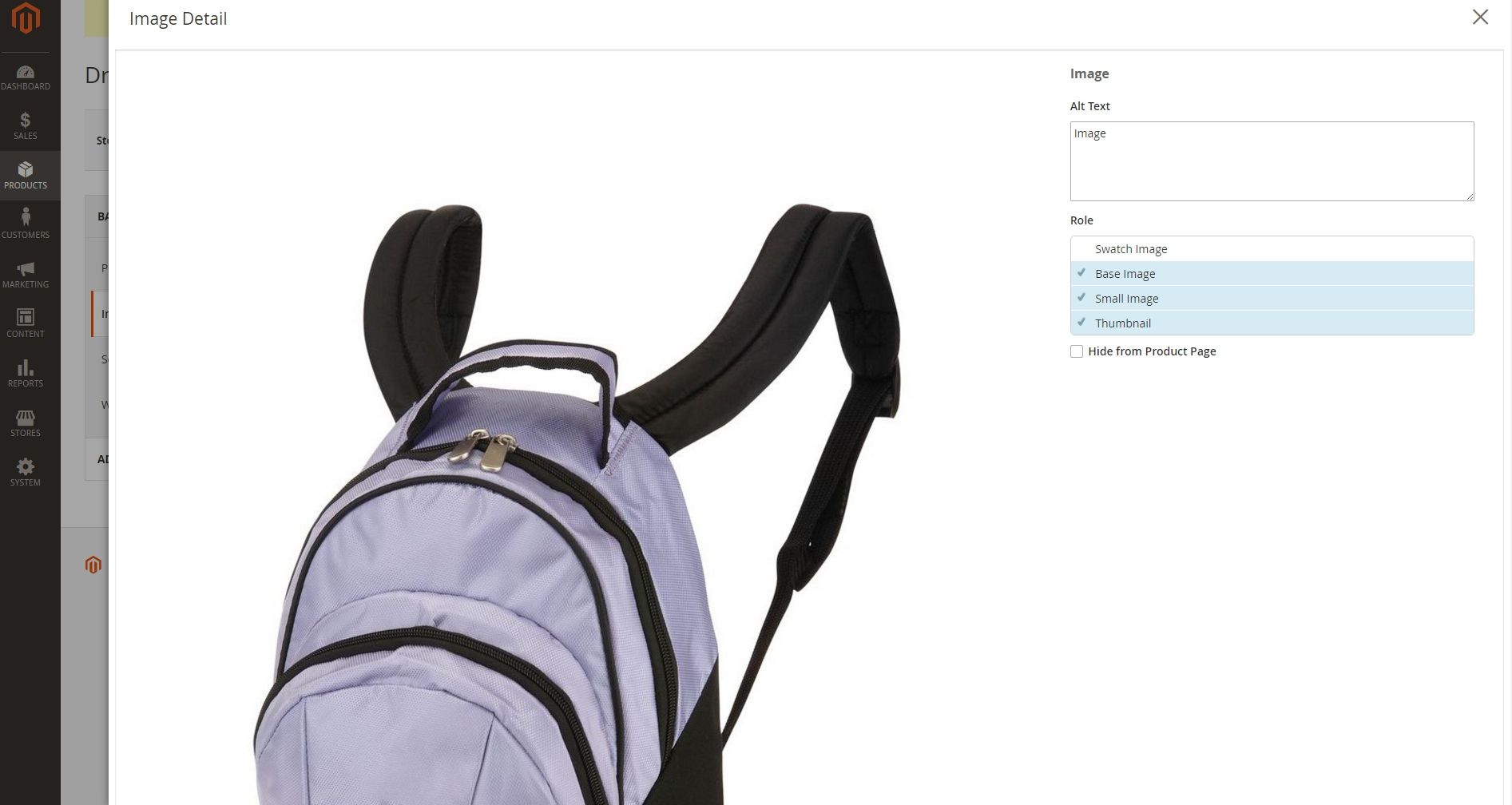There are different thoughts on what plays the major role in kicking off successful online business, but everyone agrees on the fact that SEO is no less than vital. Organic search result and click-through rate optimization have never been as important as now! To draw more customers to your store by reaching high positions in search results it is critical to optimize your site for users, not for machines. Andrey Lipattsev from Google highlighted that links, content and RankBrain are the top 3 ranking signals in Google's search algorithm.
Magento was SEO friendly from the very beginning: some features were available out-of-the-box, others could be easily implemented via third-party extensions, but every version of this powerful eCommerce platform provides more and more default SEO capabilities. So, at this point we wonder what SEO tricks are available in Magento 2 and what are the ways to improve Magento 2 SEO? Homepage or landing page must contain the most relevant information about your webstore. Search engines are likely to scan it more thoroughly and rank it higher than other pages of the website. It is critical to put the most relevant and effective keywords in the title and H1.
Page title

Page title can display up to 69 characters, depending on the search engine, but 55-60 characters are recommended due to Google’s recent algorithm updates. It’s absolutely better if the page title includes the primary keyword and your brand or company name. Teaser titles drive traffic from the SERPs.
To edit title in Magento 2 follow:
Content > Pages > Homepage > Edit

Description meta tag
Below the title in search results folks usually take a look at the description meta tag. Add key features, general description of what visitors can find on your web store, highlight your uniqueness, engage users to visit your page by turning to their emotions.
 Basically, Magento 1.x has already had SEO-advanced product page/description settings, so Magento 2 has minor additions for optimization. It includes meta elements (title, description and keywords), URL key settings for store views, Categories path for Products URL’s and meta tags for products. What’s new in Magento 2 then?
Basically, Magento 1.x has already had SEO-advanced product page/description settings, so Magento 2 has minor additions for optimization. It includes meta elements (title, description and keywords), URL key settings for store views, Categories path for Products URL’s and meta tags for products. What’s new in Magento 2 then?
Magento 2 allows setting meta description, meta keywords and title of a product dynamically. With Magento 2 you can define product meta tags in association with the aid of available product attributes and predefined templates. Product Fields Auto-Generation feature simplifies editing meta elements for each and every product and it’s a real breakthrough since arlier it was a real problem for big stores with thousands of products.
**Stores > Configuration > Catalog > Catalog **
 Canonicalization fixes stem from multiple uses for a single piece of content that appears in multiple locations on website. These tags release search engines from being “puzzled” about how to choose what version of this content should be shown. In eCommerce, canonical tags are generally implemented to solve product content duplication issues and to avoid indexing filtered category pages.
You may implement the capabilities of Magento 2 to filter category and product page due to canonical tag feature.
Canonicalization fixes stem from multiple uses for a single piece of content that appears in multiple locations on website. These tags release search engines from being “puzzled” about how to choose what version of this content should be shown. In eCommerce, canonical tags are generally implemented to solve product content duplication issues and to avoid indexing filtered category pages.
You may implement the capabilities of Magento 2 to filter category and product page due to canonical tag feature.
Store > Configuration > Catalog > Catalog > Search Engine Optimization

Note: Canonical tags are appropriate to fix duplicate content issues, but if you want to avoid indexing your filtered pages you have to use meta noindex tag. Another really notable improvement in Magento 2 SEO is availability to edit robots.txt file directly from the Admin panel. You don’t need to figure out how robots.txt code works, just follow Stores > Configuration > General > Design. Robots.txt and edit.

Note: You don’t want search engines to index search result with lots of thin content. Make sure you disallow catalog search results. Rich snippets (which are often referred to as ‘micro-data’) are a type of secondary structured data markup that can show additional information for relevant search queries. Content on the web page seems clearer for search engines if it is structured with micro-data. Why rich snippets are so important for eCommerce websites? Webstores content (such as product name, pictures, videos, pricing, inventory, ratings and reviews) has quite a predictable format. That’s why it can be pulled directly from the product page and displayed in the SERP listings. You don’t have to configure anything to get rich snippets since in Magento 2 rich snippets are available by default on the product pages. Google reads several types of rich snippet markup, but it prefers Schema.org. The major benefit of Schema.org is its capacity to raise the website’s ranking position and provide it with metatags. We have good news for you: Schema.org is already added to the Magento 2 template by default. XML sitemaps are powerful tools, they are now considered as must-have of every eCommerce toolbox. A good XML sitemap is the one that is easily crawlable for search engine spiders, so it should consist straight links to all of your pages.
If your webstore has less than 100 pages and you aren’t planning to extend it in the nearest future, then you don’t even need an XML sitemap.
XML sitemaps definitely should be implemented on websites with 1,000 + pages. Web stores with over 10,000 pages are in desperate need of several sitemaps to maintain configuration more effective.
So, to guarantee the highest effectiveness, how many XML sitemaps does your eCommerce site require? As stated in Google help files for sitemaps, single sitemap can include up to 50,000 files. Let’s highlight logical groups of XML files:
- Product map to add/remove individual products
- Category map for category or department pages
- Boilerplate pages map for static pages like “contact us”, “about us”, privacy, TOS, etc.
- Blog map for links to your blog pages (individual posts, archives, tags, author pages).
Magento 2 reveals the capability to define the preference and frequency of Product, CMS, Category and other pages individually. Magento 2 allows adding XML Sitemap to a robots.txt automatically. You just need to allow the Enable Submission to Robots.txt in the Search Engine Submission Settings section.
Store > Configuration > Catalog > XML Sitemap
 Out-of-the-box version of Magento 2 allows to apply labels to product images. This feature was available in Magento 1x, but only by the means of using third party extensions. Now one can set the label for each product image and this value will be used for both alt and title tags.
Out-of-the-box version of Magento 2 allows to apply labels to product images. This feature was available in Magento 1x, but only by the means of using third party extensions. Now one can set the label for each product image and this value will be used for both alt and title tags.
Products > Catalog > Basic Settings > Images and Videos > Image Detail

- Upsells are higher price and quality goods that you want your customer to buy instead of the chosen one.
- Cross-sells are the products from other categories related to purchases in the cart and wishlist.
- Related Products are additional products that the customer might be interested in purchasing in bulk with products he has already chosen.
You may wonder how this knowledge may help to empower your SEO? Well, it’s super easy! Internal links on Upsells, Cross-sells and Related Products on product page just make it more discoverable for search engines.
Products > Catalog > Advanced Settings
 These features are easily configurable in Magento 2.
You can enable eCommerce tracking in Google Analytics. This useful feature allows you to measure the number of transactions and revenue that your eCommerce store generates. It even finds the keywords to easily build website conversion.
These features are easily configurable in Magento 2.
You can enable eCommerce tracking in Google Analytics. This useful feature allows you to measure the number of transactions and revenue that your eCommerce store generates. It even finds the keywords to easily build website conversion.
Store > Configuration > Sales Google API
 Web store speed is one of the critical factors that influence ranking. Thankfully, Magento 2 accelerates site performance. Nevertheless, you should take care of whether your website is hosted on a reliable and speedy hosting stack.
Web store speed is one of the critical factors that influence ranking. Thankfully, Magento 2 accelerates site performance. Nevertheless, you should take care of whether your website is hosted on a reliable and speedy hosting stack.
In conclusion, out-of-the-box SEO capabilities of Magento 2 are more powerful than in previous platform versions. However, other improvements can increase your site traffic dramatically and to achieve higher SERP ranks you need to take care links on your store and high quality content. Keep abreast of Ecommerce SEO trends to implement the most valuable ones and we’ll be more than happy to help you with that!
